 | TODAY IN SCIENCE HISTORY
NEWSLETTER - 1 DECEMBER |
| In 1857, a U.S. patent was issued to Ephraim Ball for his mower design, which became the first widely successful of the two-wheeled flexible or hinged bar mowers. This “Ball's Ohio Mower” greatly influenced the change from single driving-wheel machines to those with double drivers. Ball began inventing with a turn-top stove. Then in 1840 he established a foundry for making ploughs. An excerpt on Ephraim Ball from A History of American Manufactures from 1608 to 1860 gives an insight to the development of mechanized agriculture in the farmlands of the United States in the mid-19th century. |
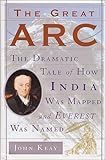 On 1 Dec 1866, George Everest died. His name on Mount Everest honours his extraordinary work mapping India. Today's Science Store pick is: The Great Arc: The Dramatic Tale of How India was Mapped and Everest was Named, by John Keay. This captivating story about the Great Trigonometrical Survey of India is steeped in the subcontinent's past, written in an elegant style that brings to life the personalities of the surveyors. Keay covers the science of surveying and the logistics (an army of men, instruments, elephants and horses hauling a half-ton theodolite and braving tiger-infested jungles). Yet George Everest was an irascible martinet, driven by an ego as monumental as Everest. With an eye for intriguing incident and an ear for the telling phrase, one of the finest writers on India vividly resurrects the nineteenth century's most ambitious scientific endeavor. It is available New from $9.72. Used from $0.01. (As of time of writing.). On 1 Dec 1866, George Everest died. His name on Mount Everest honours his extraordinary work mapping India. Today's Science Store pick is: The Great Arc: The Dramatic Tale of How India was Mapped and Everest was Named, by John Keay. This captivating story about the Great Trigonometrical Survey of India is steeped in the subcontinent's past, written in an elegant style that brings to life the personalities of the surveyors. Keay covers the science of surveying and the logistics (an army of men, instruments, elephants and horses hauling a half-ton theodolite and braving tiger-infested jungles). Yet George Everest was an irascible martinet, driven by an ego as monumental as Everest. With an eye for intriguing incident and an ear for the telling phrase, one of the finest writers on India vividly resurrects the nineteenth century's most ambitious scientific endeavor. It is available New from $9.72. Used from $0.01. (As of time of writing.). | | For picks from earlier newsletters, see the Today in Science History Science Store home page. | |
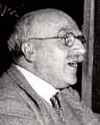 | An attempt to study the evolution of living organisms without reference to cytology would be as futile as an account of stellar evolution which ignored spectroscopy. - J.B.S. Haldane, English geneticist and biometrician (died 1 Dec 1964).  |
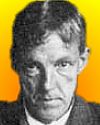 | Archimedes will be remembered when Aeschylus is forgotten, because languages die and mathematical ideas do not. “Immortality” may be a silly word, but probably a mathematician has the best chance of whatever it may mean. - Godfrey Harold Hardy, English mathematician (died 1 Dec 1947).  |
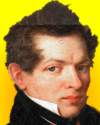 | There is no branch of mathematics, however abstract, which may not some day be applied to phenomena of the real world. - Nikolay Ivanovich Lobachevsky, Russian mathematician (born 1 Dec 1792).  |
| Before you look at today's web page, see if you can answer some of these questions about the events that happened on this day. Some of the names are very familiar. Others will likely stump you. Tickle your curiosity with these questions, then check your answers on today's web page. |
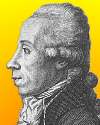 | Martin Heinrich Klaproth, born 1 Dec 1743, was a German chemist who was one of the founders of analytical chemistry. He discovered zirconium and another now well-known element in 1789, and cerium (1803), and contributed to the identification of others. He described them as distinct elements, though he did not obtain them in the pure metallic state. He was Europe's leading analytical chemist. A significant contribution was his insistence on accepting the importance of reporting "small" losses and
 What was the other, heavy element he discovered in 1789? |
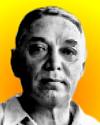 | Anthropologist Sir Peter Buck (1879-1951) originally was named Te Rangi Hiroa a the son of a Maori chiefess. He practised medicine, was a member of parliament and served in WW I. After becoming an anthropologist, he joined the Bishop Museum in Honolulu, Hawaii, and later was its director from 1936 until his death.
 In what country do the Maori live? |
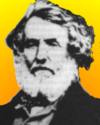 | Sir George Everest (1790-1866) is remembered by the mountain named in his honour, recognising his 25 years of dedication to the task of making an accurate survey of the Indian subcontinent.
 In what country was he born? |
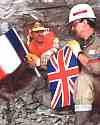 | On 1 Dec of a certain year, British and French workers digging the Channel Tunnel between their countries finally met in the service tunnel after knocking out a passage large enough to walk through and shake hands. The United Kingdom and France were now linked for the first time in 8,000 years.
 In which decade was this link first made? |
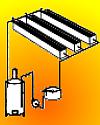 | On 1 Dec 1936, the first U.S. patent was issued for a method of growing plants in a large commercial hydroponicum. The related word “hydropontics” was coined in the early 1930s, by Professor Gericke at U.C.L.A.
 How are plants grown by this method? |
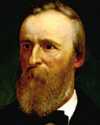 | On 1 Dec 1878, the White House, Washington, DC, had its first telephone installed by Alexander Graham Bell himself. It is reported that the president's first outgoing call went to Bell, thirteen miles away. Hayes first words instructed Bell to speak more slowly.
 Which president used the first White House telephone? |
When you have your answers ready to all the questions above, you'll find all the information to check them, and more, on the December 1 web page of Today in Science History. Or, try this link first for just the brief answers.
Fast answers for the previous newsletter for November 30: AGA stove • penicillin • insulin • vanadium • decade containing the year 1858 • balloon flight. |
 If you enjoy this newsletter, the website, or wish to offer encouragement or ideas, please send feedback by using your mail reader Reply button. If you enjoy this newsletter, the website, or wish to offer encouragement or ideas, please send feedback by using your mail reader Reply button.
Your click on a StumbleUpon, Google+ or Facebook social button on the site webpages is also a welcome sign of appreciation. Thank you for using them. |
To find citations for quotations go to the corresponding webpage by clicking on the “quotes” balloon icon. Sources for the thumbnails appear on today's webpage with the corresponding item.
� This newsletter is copyright 2013 by todayinsci.com. Please respect the Webmaster's wishes and do not put copies online of the Newsletter � or any Today in Science History webpage. (If you already have done so, please remove them. Thank you.) Offline use in education is encouraged such as a printout on a bulletin board, or projected for classroom viewing. Online, descriptive links to our pages are welcomed, as these will provide a reader with the most recent revisions, additions and/or corrections of a webpage. For any other copyright questions, please contact the Webmaster by using your mail reader Reply button. |
--
If you do not want to receive any more newsletters,
Unsubscribe To update your preferences and to unsubscribe visit
this link 






 What was the other, heavy element he discovered in 1789?
What was the other, heavy element he discovered in 1789? 
 In what country do the Maori live?
In what country do the Maori live? 
 In what country was he born?
In what country was he born? 
 In which decade was this link first made?
In which decade was this link first made? 
 How are plants grown by this method?
How are plants grown by this method? 
 Which president used the first White House telephone?
Which president used the first White House telephone?  If you enjoy this newsletter, the website, or wish to offer encouragement or ideas, please send feedback by using your mail reader Reply button.
If you enjoy this newsletter, the website, or wish to offer encouragement or ideas, please send feedback by using your mail reader Reply button. 

Δεν υπάρχουν σχόλια:
Δημοσίευση σχολίου